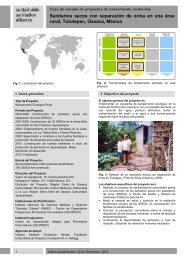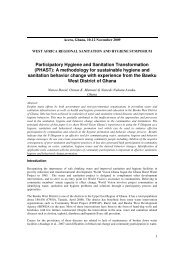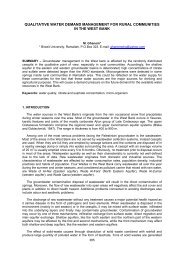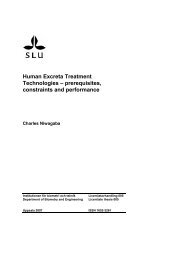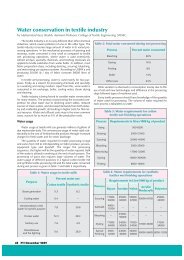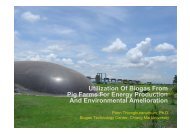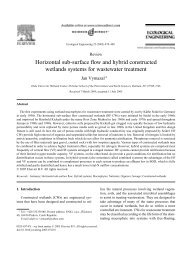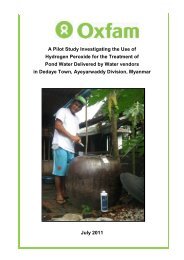Fertigation: Optimizing the Utilization of Water and Nutrients - SSWM
Fertigation: Optimizing the Utilization of Water and Nutrients - SSWM
Fertigation: Optimizing the Utilization of Water and Nutrients - SSWM
You also want an ePaper? Increase the reach of your titles
YUMPU automatically turns print PDFs into web optimized ePapers that Google loves.
et al., 1997; Tilman et al., 2002). Since <strong>the</strong>n, <strong>the</strong> use <strong>of</strong> integrated pest<br />
management <strong>and</strong> improved fertilizer management has demonstrated <strong>the</strong><br />
potential for a more ecological intensive agriculture.<br />
Growing importance <strong>of</strong> irrigated agriculture<br />
Irrigated agriculture has exp<strong>and</strong>ed rapidly during <strong>the</strong> past 40 years, from<br />
153 Mha in 1966 to 277 Mha in 2002 (Fig. 3). Moreover, global food security is<br />
more dependent on irrigated agriculture today than in <strong>the</strong> past, because <strong>the</strong><br />
irrigated area now forms 18% <strong>of</strong> all cultivated l<strong>and</strong>, compared with 11% in<br />
1966, <strong>and</strong> it currently accounts for about 40% <strong>of</strong> our global food supply.<br />
Fig. 3. Trends in total global irrigated crop area <strong>and</strong> % total cultivated area.<br />
Source: http://faostat.fao.org.<br />
Irrigated agriculture currently uses about 70% <strong>of</strong> <strong>the</strong> fresh water estimated to be<br />
available globally for use each year (Postel, 1998). However, increasing<br />
competition for water between agriculture <strong>and</strong> o<strong>the</strong>r users will require producers<br />
<strong>of</strong> irrigated crops to be increasingly more efficient, so that <strong>the</strong> yield per unit <strong>of</strong><br />
applied water must increase substantially. At <strong>the</strong> same time, because <strong>of</strong> <strong>the</strong><br />
importance <strong>of</strong> irrigated agriculture to <strong>the</strong> global food supply, <strong>the</strong> farmers who<br />
use irrigation must sustain or even accelerate <strong>the</strong> rates <strong>of</strong> increase <strong>of</strong> crop yields.<br />
Fortunately <strong>the</strong>re are a number <strong>of</strong> existing technologies that can greatly improve<br />
water use efficiency, compared with <strong>the</strong> traditional flood or furrow irrigation.<br />
Low-‐pressure pivot irrigation <strong>and</strong> sub-‐surface drip irrigation systems are good<br />
examples <strong>of</strong> such technologies, although such systems require substantial capital<br />
investment. However, when <strong>the</strong>se systems are coupled with improved methods<br />
for scheduling irrigation <strong>and</strong> controlling <strong>the</strong> amount applied, it is possible to<br />
achieve significant increases in both crop yields <strong>and</strong> water use efficiency<br />
(WUE).<br />
29



